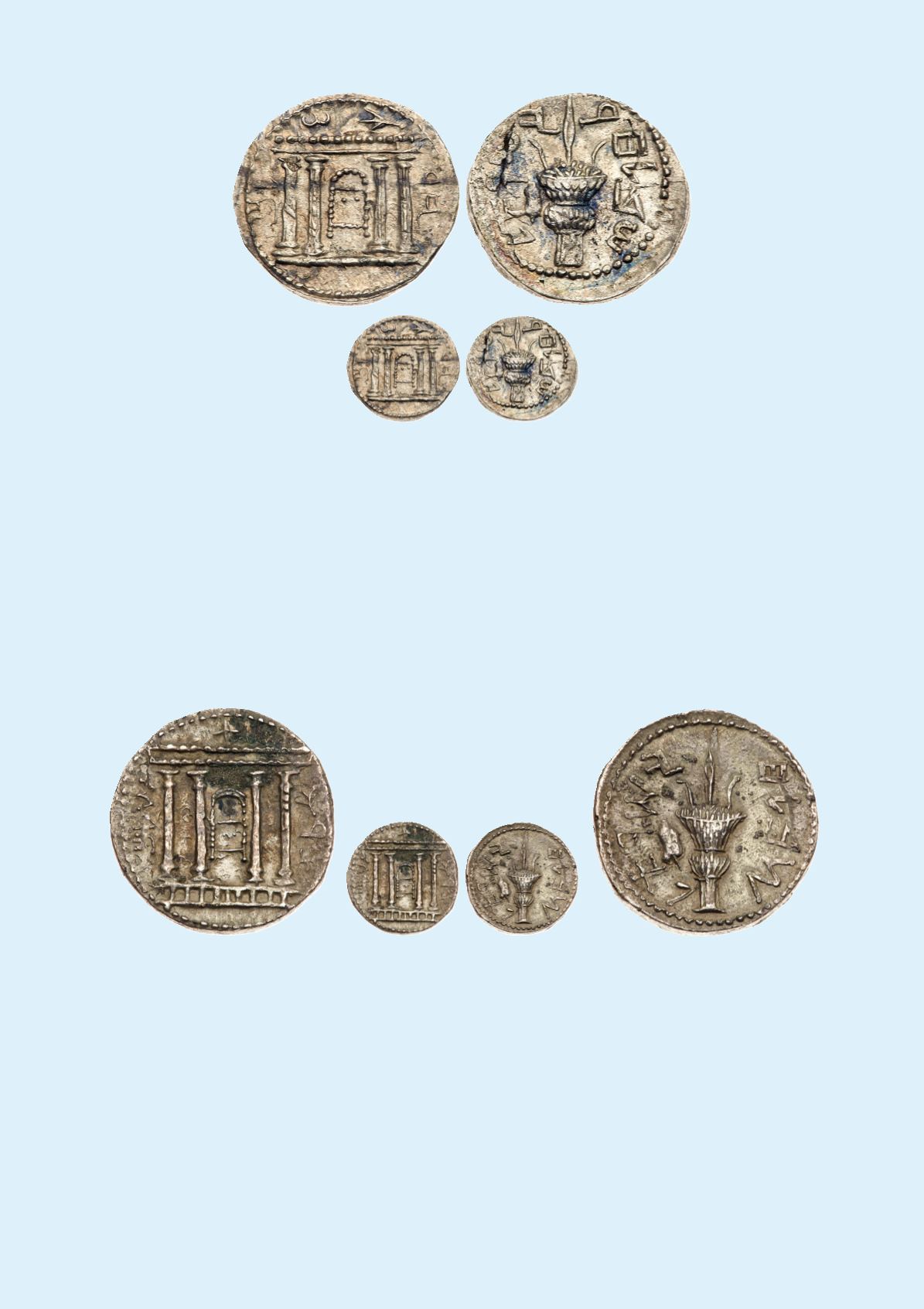

284
Judaea, Bar Kokhba Revolt. Silver Sela (14.02 g), 132-135 CE. Year 2 (133/4 CE). ‘Jerusalem’ (Paleo-He-
brew), tetrastyle façade of the Temple of Jerusalem; show bread table or Ark of the Covenant in chest
form with semicircular lid and short legs, seen from a narrow side. Rev. ‘Year two of the freedom of Isra-
el’ (Paleo-Hebrew), lulav with etrog at left. Hendin 1385; Mildenberg 7 (O1/R5); TJC 229.
Very Rare - only
six specimens cited by Mildenberg.
Removed from an NGC slab where graded Ch AU; Strike: 4/5, Surface:
3/5.
$5,000
From the Dr. Patrick Tan Collection
Ex Brody Collection.
This sela is especially notable because it is actually a hybrid coin muling a year 1 obverse with a year 2 reverse. This reuse of
dies, which is more frequent for the smaller zuz denomination, may indicate the increasing pressures on the rebel mint(s) as the
Roman’s began to regroup after their initial defeats and prepared for the massive invasion of Judaea that would finally crush
Bar Kokhba and his supporters.
285
Judaea, Bar Kokhba Revolt. Silver Sela (13.69 g), 132-135 CE. Year 2 (133/4 CE). ‘Jerusalem’ (Paleo-He-
brew), tetrastyle façade of the Temple of Jerusalem; show bread table or Ark of the Covenant in chest
form with semicircular lid and short legs, seen from a narrow side; above façade, +. Rev. ‘Year two of the
freedom of Israel’ (Paleo-Hebrew), lulav with etrog at left. Hendin 1387a; Mildenberg 21.1 (O4/R14; this
coin); TJC 230. Well struck and well centered. Portions of the underlying type visible. A most impressive
example. Toned. Removed from an NGC slab where graded Ch AU; Strike: 5/5, Surface: 3/5. $4,000
From the Dr. Patrick Tan Collection
Ex Morton & Eden 10 (23 November 2004), lot 646;
Ex Allotte de la Fuÿe Collection (Florange & Ciani, 17 February 1925), 1105.
The obverse of this year 2 sela issue depicts the Jerusalem Temple but now features a + shape above the façade whereas
this space was taken up by part of the paleo-Hebrew legend on the issues of the first year of the Bar Kokhba War. There
is a great deal of controversy over whether this added symbol was intended to depict a star and advertise Simon bar Kokh-
ba’s supposed messianic ambitions. The patronymic of the rebel leader was actually bar Kosiba but he assumed the name bar
Kokhba (literally “son of a star”) as his
nom de guerre
because of its association with the messianic prophecy of Numbers 24:17.



















